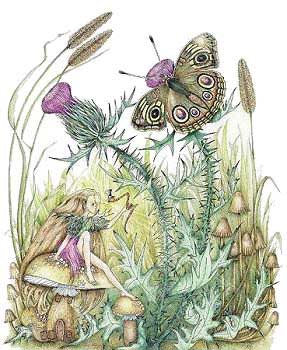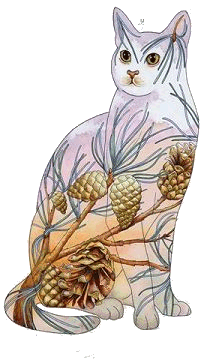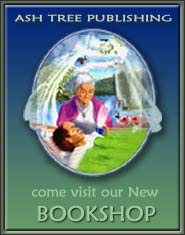Seated Massage: A Time to Sit Up Straight and Relax
by Mary Kathleen Rose
Wow! Linda said as she stood up from the chair and slowly
walked across the dining room floor. My headache is gone.
Thank you!
Had I given a complicated headache treatment or finished a full-body massage session for Linda? No.  I had just given her a five-minute, impromptu seated massage while she sat on a kitchen chair. She is the caregiver for one of my elder, homebound massage clients and had been complaining of a headache, so I offered to give her a quick seated massage session.
I had just given her a five-minute, impromptu seated massage while she sat on a kitchen chair. She is the caregiver for one of my elder, homebound massage clients and had been complaining of a headache, so I offered to give her a quick seated massage session.
Over the years of my massage practice, I have often been impressed with the effects of a few minutes of well-placed touch with the client in a seated position. When I was in massage school in 1984, we learned a seated massage routine in shiatsu class that was often used as a quick warm-up. The recipient sat on a cushion on the floor, and the practitioner stood, knelt, and/or sat behind the person to massage their shoulders, neck, and back with a combination of presses, squeezing movements, and percussion. Even then, I was pleasantly surprised with the change that could happen in a short amount of time, as the recipient relaxed and let go of tension.
A short, seated massage session can be likened to a full,
deep breath, in which the receiver of touch is allowed to
exhale spent energy from the body, and is rejuvenated by the
expansiveness of fresh inspiration. Practiced without lotion
or oil on a client who is fully clothed, seated massage provides
a break in the day's routine that can help reset the perception
of one’s life with all its myriad physical, mental,
and emotional challenges.
Massage Chair is Not for Everyone
With my training in shiatsu and tui na, I could appreciate the value of short treatments in the seated position and was attracted to the possibilities presented by the first forward-inclining massage chairs developed in the mid-1980s.  I bought a chair in 1986 and used it at health-related conferences and other promotional events over the years. While that chair and subsequent designs have become the standard for seated massage, I also noticed the limitations of the professional massage chair. While they are comfortable for many people, they pose problems for others, especially the elderly. Here are some considerations:
I bought a chair in 1986 and used it at health-related conferences and other promotional events over the years. While that chair and subsequent designs have become the standard for seated massage, I also noticed the limitations of the professional massage chair. While they are comfortable for many people, they pose problems for others, especially the elderly. Here are some considerations:
• Circulation in the legs" The elderly, and those
with compromised circulation in the legs, do not benefit by
having their lower limbs compressed against the incline of
the leg rests on the commercial massage chair.
• Breathing" Those with compromised breathing,
due to age, asthma, emphysema, or other respiratory disorders
can be uncomfortable leaning into a face cradle, as it can
impair breathing and put undue pressure against delicate tissues
of the face. The chest support also inhibits breathing for
some people because of pressure on the ribcage.
• Neck and head injuries" Those with neck or head
injuries often find the face cradle uncomfortable as it provides
no real support for the neck. In this position, pressure against
the upper back, neck, and head can aggravate neck pain or
contribute to headaches or dizziness.
• Accessibility" For some people, the massage chair
is simply inaccessible. Clothing may make it difficult to
get into the required position. Or issues of balance or flexibility
can make it awkward to sit in the chair. For a very short
person or child, it can be difficult to adjust the chair to
the right body proportions.

Seated and Upright
So while I still own my massage chair, it lives most of the time in my shed, and I have returned to the use of a regular chair for seated massage. For many years now, I have taught seated massage in my classes of Comfort Touch, a nurturing style of acupressure. In this work, massage therapists learn to work with people who are elderly or ill, so it is useful to learn how to work with a client who may be seated in a wheelchair or recliner. But the upright, seated position has benefits, not only for this population, but for the general population as well.

References
1 Foster, Mary Ann. Your Birthright: A Case for the Human
Stance. Massage & Bodywork 2005 April/May; 20(2): 72.
2 Rose, Mary Kathleen. Comfort Touch:
Massage for the Elderly and the Ill , Video and Guide. Wild
Rose, Boulder: 2004.
Resource
Thompson, Gerry. Shiatsu: A Complete Step-by-Step Guide .
Sterling Publishing Co., Inc. New York: 1994.
 Mary
Kathleen Rose, CMT, has more than 25 years of experience in
the holistic health field, practicing and teaching shiatsu,
integrative massage, and body energy therapies. She is the
developer of Comfort Touch™, a style of massage appropriate
for the elderly and the ill. She supervises the massage therapy
program at HospiceCare of Boulder and Broomfield counties
in Colorado and teaches in various massage schools and medical
settings.
Mary
Kathleen Rose, CMT, has more than 25 years of experience in
the holistic health field, practicing and teaching shiatsu,
integrative massage, and body energy therapies. She is the
developer of Comfort Touch™, a style of massage appropriate
for the elderly and the ill. She supervises the massage therapy
program at HospiceCare of Boulder and Broomfield counties
in Colorado and teaches in various massage schools and medical
settings.

COMFORT
TOUCH DVD - NOW AVAILABLE
This beautifully produced video introduces the viewer to
the principles and techniques of Comfort Touch, a nurturing
form of acupressure massage designed to be safe and appropriate
for the elderly and the ill. Drawing on her many years of
experience practicing and teaching this work in home-care
and medical settings, Mary Kathleen Rose shares the essential
elements of Comfort Touch with demonstrations of its applications
in the seated, supine and side-lying positions.
This program will inspire the viewer - whether healthcare
professional or family caregiver - to offer the benefits
of touch to those for whom conventional massage may cause
discomfort or even injury. While Comfort Touch provides
soothing relief for the elderly and the ill, it can enhance
the quality of life for anyone in need of a caring touch.
Includes 40-page Video Guide, complete with Principles
and Techniques of Comfort Touch, Benefits of Comfort Touch,
Precautions in the Use of Touch and Self-Care Exercises
for the Caregiver. Yours
for $29.00 plus shipping.







